All About the Patella Knee Brace
A patella knee brace is a brace or sleeve worn around the knee for the purpose of treating a condition concerning the patella. Because there are many types of patella-related conditions, there is a large variety of patella knee braces. `
To help you find the best patella knee brace for your condition, this article will break down the main types available on the market. These braces can be categorized into three categories: patellar tendon straps, compression sleeves that target the patella, and patellofemoral offloaders.
Before diving into braces, this article provides a brief overview on patella is and how it can contribute to pain symptoms. Understanding the patella will help you understand how each patella knee brace works and whether or not one can help you.
What Is the Patella?
The patella, also known as your kneecap, is a small bone at the front of your knee joint. It is attached to two tendons: the patellar and quadriceps tendons. The two main purposes of your patella are to provide protection and promote ease of movement.
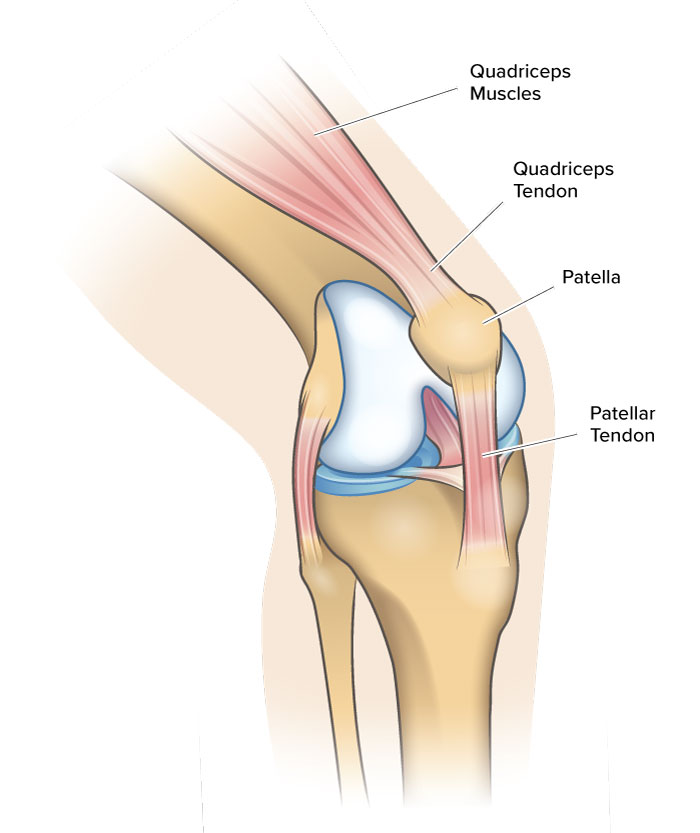
In the event of a fall, for example, your patella shields your inner knee from damage. The patella also reduces frictional forces that act on your patellar and quadriceps tendons1.
The health of your patella is essential to smooth and pain-free movement. When you extend your leg, a force travels from your quadriceps to your shin bone. Before this force reaches your shin bone, it travels through your patellar tendon, patella, and quadriceps tendon. These structures form a pulley system that helps make leg extension more efficient.
You can learn more about the patella and how it contributes to leg movements here.
Patellofemoral Compartment Explained
Your knee has three compartments. These are the areas where the bones of your knee interact. For example, your patella forms the patellofemoral compartment with the end of your femur. Your two other compartments include the medial and lateral tibiofemoral compartments. These compartments are created by the ends of your tibia and femur.
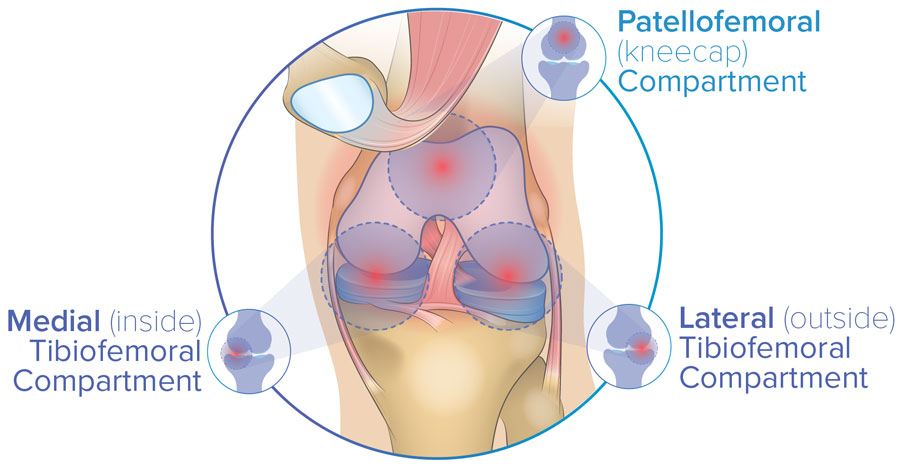
The patellofemoral compartment is where patellofemoral knee pain originates. Patellofemoral knee pain is a general term that describes pain located in the patellofemoral compartment. While there are many causes of this condition, a common source is cartilage degeneration. When the articular cartilage lining your patella and femur degrades, the bones rub against each other, which results in creating pain, swelling, and stiffness.
Do you have patellofemoral knee pain? If you’re unsure, read more about this condition here.
When Is a Patella Knee Brace Used?
Patella knee braces may be used to treat misalignment of your patella, tendon swelling, and degenerative conditions. However, not all patella knee braces are created alike.
The conditions a patella knee brace is best suited to treat will depend on how the brace is constructed. For example, a patellar strap or compression sleeve will be better suited to treat minor conditions, such as patellar maltracking or mild tendon swelling.
Degenerative conditions, on the other hand, tend to be more severe and require more stability. Some degenerative conditions include osteoarthritis, tendinopathy, or other cartilage defects. These conditions may benefit from a patella knee brace that is highly structured and also able to reduce pressure in the patellofemoral compartment. An example of a suitable brace for severe patellar conditions would be a patellofemoral or tri-compartment offloader.
If you are unsure why your patella hurts, check out Pain On the Front of Your Knee Joint? Learn Why.
If your knee pain is located elsewhere, check out our other knee pain resources:
- Knee Pain on the Inside of Your Joint? Causes and Solutions
- Knee Pain When Bending and Squatting? Learn Why
Types of Patella Knee Brace
Patellar Tendon Strap
The patellar tendon strap is a type of patella knee brace that applies pressure to the patellar tendon. It is a thin band worn beneath the patella.
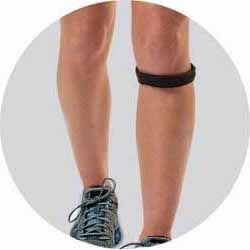
Patellar tendon straps can be worn for treating overuse injuries in their early stages. They may also be recommended for other mild patella-related cases or conditions that only involve the patellar tendon. However, the effectiveness of patellar tendon straps in decreasing pain is still being reviewed by researchers2.
Some athletes have experienced reduced pain wearing a patellar strap2. However, the exact way these patellar knee braces work is still unclear. One theory states that the strap reduces tendon strain by applying pressure to the patellar tendon2. Another theory suggests the strap improves proprioception, which is your body’s awareness of itself. Increased proprioception is considered beneficial since it might result in improved awareness of knee alignment2,3.
Compression Sleeve with Cutouts or Buttresses
There are many types of compression knee sleeves on the market. Sometimes called soft knee braces, these products are tight-fitting sleeves made of moisture-wicking materials. By compressing the joint, compression sleeves are thought to improve blood flow, increase warmth, and stabilize the patella4.
Some compression sleeves include cutouts and buttresses (additional padding). These features help the brace apply compression to specific areas around the patella. By applying pressure in certain areas, such as the patellar tendon, these braces may help stabilize the patella or promote proper patellar tracking.
But based on research so far, it is unclear whether compression sleeves with buttresses or cutouts can treat chronic patellofemoral pain5. Since they do not provide structured support, these products are limited in their ability to treat severe conditions. However, some compression sleeves contain hinges, which may help address minor amounts of joint instability.
Overall, compression sleeves are considered most appropriate for preventing future injury or degeneration. If you participate in activities that are risky or highly fatiguing, a compression sleeve may be beneficial to your long-term knee health6,7.
Patellofemoral Offloader
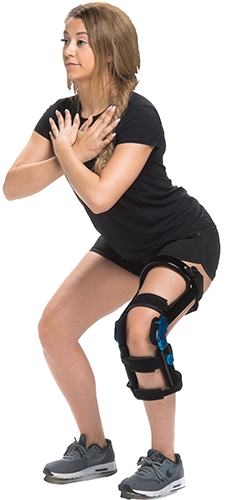
One of the most effective ways to treat patellofemoral knee pain is through patellofemoral offloading8. Patellofemoral offloading refers to a method of reducing pressure within your patellofemoral compartment.
There is currently only one knee brace on the market that can provide patellofemoral offloading. Levitation 2 is a tri-compartment offloader knee brace that is made with hinges containing liquid spring technology. When you bend your knee, the liquid springs absorb your body weight and then return that energy to your legs during leg extension.
The hinge of a Levitation knee brace is highly powerful. In fact, research shows that Levitation can reduce joint loads by up to 50%9. In addition, research shows that wearing a Levitation knee brace is equivalent to losing 45 pounds of body weight9.
Levitation 2 for Patellar Conditions
The Levitation knee brace is a highly powerful brace that has been successfully used to treat a variety of severe conditions, including knee osteoarthritis and ligament injuries. If you have patellofemoral osteoarthritis or any other condition that affects the patellofemoral compartment, this brace may be of interest to you.
Levitation is currently the only brace on the market that can actually reduce pressure in your patellofemoral compartment. The reason Levitation is different from all other offloaders on the market is because of its unique liquid spring hinge technology.
Although many braces on the market are characterized as offloaders, the majority of them cannot accomplish patellofemoral offloading. These braces are usually referred to as uni-compartment offloaders since they only reduce pressure in a single tibiofemoral compartment.
Uni-compartment offloader braces work by applying pressure to one side of the knee, which is usually the tibiofemoral compartment that is diseased or weak10, 11. These types of offloaders cannot treat knee pain related to the patellofemoral compartment12.
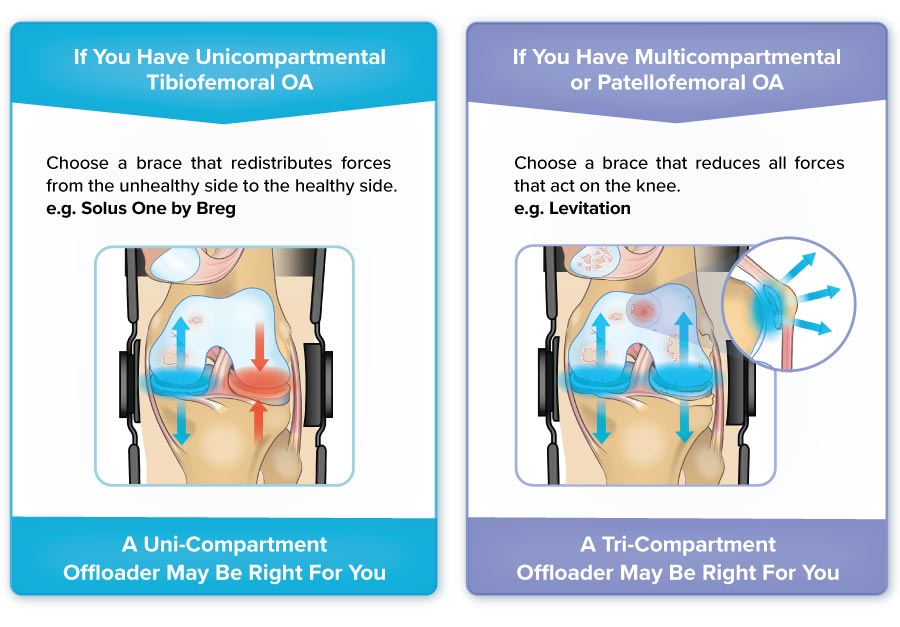
Learn More
Shopping for a knee brace that suits your unique needs is so easy feat. As you learn more about your bracing options, be sure to check out our other resources on knee braces:
- Best Hinged Knee Brace for Your Needs
- Knee Support Brace – What You Need to Know
- How to Choose the Best Knee Brace for Arthritis
- Top Five Offloader Knee Braces
References
- C. F. Cox, M. A. Sinkler, and J. B. Hubbard, “Anatomy, Bony Pelvis and Lower Limb, Knee Patella,” in StatPearls, Treasure Island (FL): StatPearls Publishing, 2021. Accessed: Jun. 20, 2021. [Online]. Available: http://www.ncbi.nlm.nih.gov/books/NBK519534/
- A. de Vries et al., “Effect of patellar strap and sports tape on pain in patellar tendinopathy: A randomized controlled trial: Effect strap and tape jumper’s knee symptoms,” Scand J Med Sci Sports, vol. 26, no. 10, pp. 1217–1224, Oct. 2016, doi: 10.1111/sms.12556.
- M. Lavagnino, S. P. Arnoczky, J. Dodds, and N. Elvin, “Infrapatellar Straps Decrease Patellar Tendon Strain at the Site of the Jumper’s Knee Lesion: A Computational Analysis Based on Radiographic Measurements,” Sports Health, vol. 3, no. 3, pp. 296–302, May 2011, doi: 10.1177/1941738111403108.
- N. A. Mohd Sharif, S.-L. Goh, J. Usman, and W. K. Z. Wan Safwani, “Biomechanical and functional efficacy of knee sleeves: A literature review,” Physical Therapy in Sport, vol. 28, pp. 44–52, Nov. 2017, doi: 10.1016/j.ptsp.2017.05.001.
- M. Hrubes and T. L. Nicola, “Rehabilitation of the Patellofemoral Joint,” Clinics in Sports Medicine, vol. 33, no. 3, pp. 553–566, Jul. 2014, doi: 10.1016/j.csm.2014.03.009.
- D. Van Tiggelen, E. Witvrouw, P. Roget, D. Cambier, L. Danneels, and R. Verdonk, “Effect of bracing on the prevention of anterior knee pain—a prospective randomized study,” Knee Surg Sports Traumatol Arthrosc, vol. 12, no. 5, pp. 434–439, Sep. 2004, doi: 10.1007/s00167-003-0479-z.
- D. Van Tiggelen, P. Coorevits, and E. Witvrouw, “The use of a neoprene knee sleeve to compensate the deficit in knee joint position sense caused by muscle fatigue: Deficit in knee joint position sense,” Scandinavian Journal of Medicine & Science in Sports, vol. 18, no. 1, pp. 62–66, May 2007, doi: 10.1111/j.1600-0838.2007.00649.x.
- Budarick, A.R., Bishop, E.L., and Cowper-Smith, C.D. (2021). Preliminary evaluation of a new orthotic for multi-compartment knee osteoarthritis: a retrospective pilot survey. J. Prosthet. Orthot. Under Peer Review.
- McGibbon, C.A., Brandon, S.C., Bishop, E.L., Cowper-Smith, C.D., Biden, E.N. (2021). Biomechanical study of a novel tri-compartmental unloader brace for the knee. Front. Bioeng. Biotechnol. doi:10.3389/fbioe.2020.604860
- K. Briem and D. K. Ramsey, “The Role of Bracing,” Sports Medicine and Arthroscopy Review, vol. 21, no. 1, pp. 11–17, Mar. 2013, doi: 10.1097/JSA.0b013e31827562b5.
- D. K. Ramsey and M. E. Russell, “Offloader Braces for Medial Compartment Knee Osteoarthritis: Implications on Mediating Progression,” Sports Health, vol. 1, no. 5, pp. 416–426, Sep. 2009, doi: 10.1177/1941738109343157.
- R. D. Heekin and A. A. Fokin, “Incidence of bicompartmental osteoarthritis in patients undergoing total and unicompartmental knee arthroplasty: is the time ripe for a less radical treatment?,” J Knee Surg, vol. 27, no. 1, pp. 77–81, Feb. 2014, doi: 10.1055/s-0033-1349401.